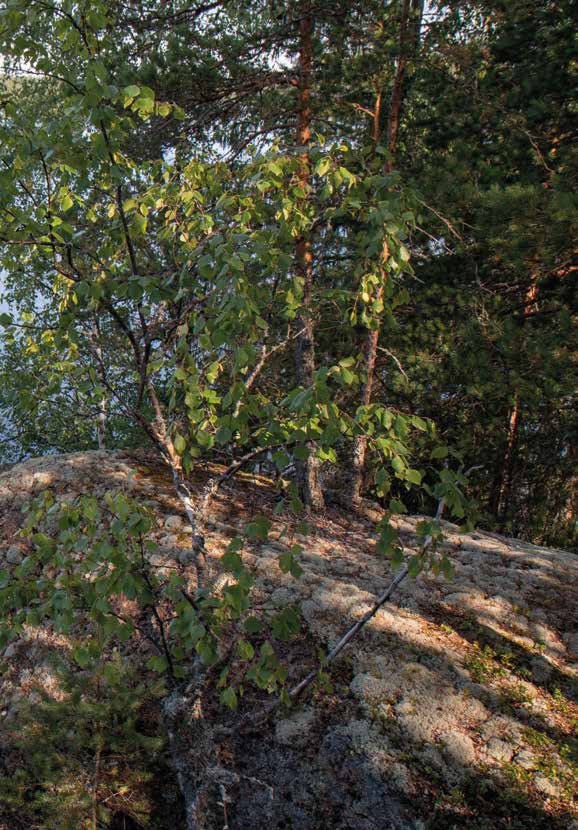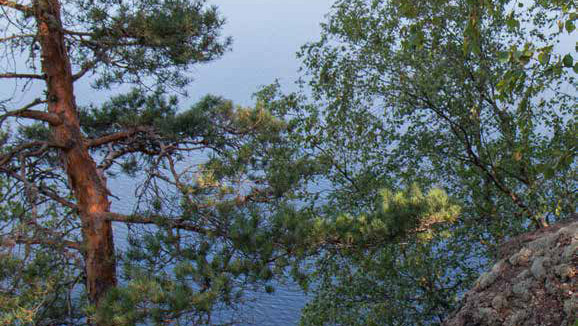The Ievasvuori rock paintings in Luumäki were made 7,000-3,500 BCE. More than 120 similar rock painting sites dating back to the Stone Age have been identified in Finland. A significant proportion of them are in South- East Finland. Discernible in the Ievasvuori rock painting are broad vertical patches, with a possible human figure on their left, its arms outstretched. However, the colour has spread so that identification is uncertain. Above the vertical marks there are faint traces of colour. The next rock section contains an unusual geometric design: five angled lines in succession opening to the right, with two vertical lines on their right, their upper ends bending to the right.
Who were you? Were you alone or were there others with you? Were you the only one to leave their mark in the rock?

You stood under an overhang of Ievasvuori rock, maybe thousands of years ago, in the early mists of humanity. You came along Hiijärvi lake on the raft you had built, nervously looking out for spirits reaching out of the water, or the great fish you had heard tales about. A fish that is so big it can’t even turn around in the lake. You were enticed by the soaring high rock, it called you or those who came with you.
For us, you left signs of your visit, lines drawn using a red dye, which I can’t understand. In one, you have drawn a human figure with bent knees. Is that you? You are raising your arm as if to greet us. Your message from the past. What is it?
Something has made you draw strange geometric figures. Angled lines march one after another, about to collide with vertical lines broken at the tips.
Did you finish what you wanted to do? Are the splodges of colour on the rock signs of your hurry, that something or someone interrupted your work? Or has time erased your message?
Who were you? What would you tell me if I met you now?
Text: Pekka Vartiainen
Pictures: Ekaterina Ivanova
Translation: Annira Silver
Location on map
The story and the pictures are a part of Tarinajoki book (River of Stories), made in Rural Explorer project. As part of a culture tourism project, stories arising from the body of folk narratives and history also have a function in relation to the productisation of tourism. The stories are linked to real locations.
